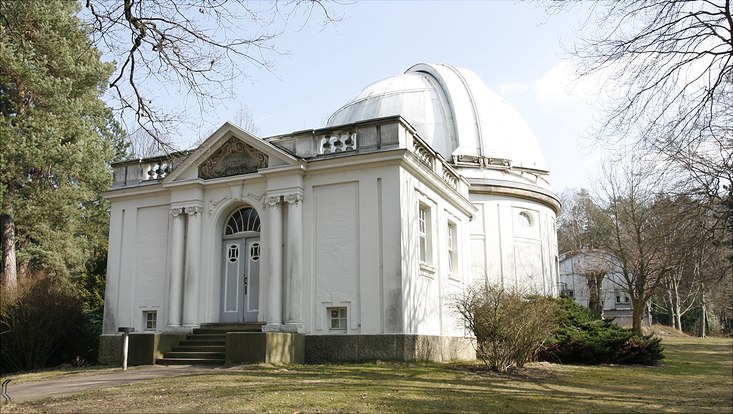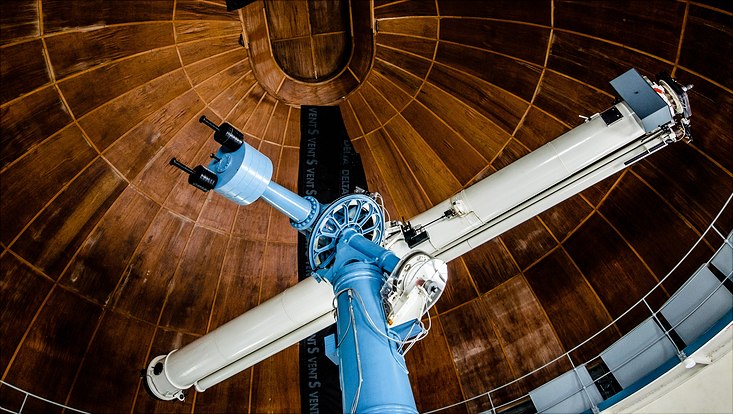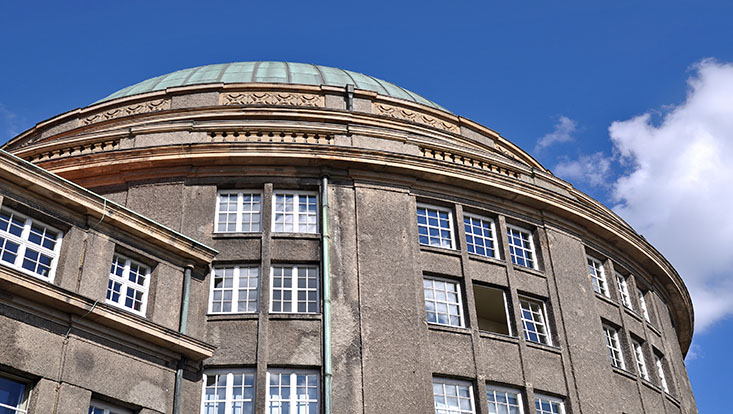110 years of astronomy at GojenbergWhy the observatory in Bergedorf should be declared a UNESCO World Heritage Site
11 April 2022, by Christina Krätzig
In the past year, Hamburg suggested for the second time that the observatory at Universität Hamburg be declared a UNESCO World Heritage Site. The observatory’s director, Prof. Dr. Robi Banerjee, explains why it should be on the German list.
Today the observatory, built in 1912, is an enchanting cluster of Neo-Baroque domed buildings atop a hill in a forest north of Bergedorf, far from the lights of the city. It was once one of Europe’s most significant observatories and it is now in the running to become the world’s eighth modern observatory to be named as part of humanity’s cultural heritage by UNESCO, the United Nations Educational, Scientific and Cultural Organization. According to advocates, no other place so visibly reflects the transition from classical astronomy to modern astrophysics.
“Here, history and modern scientific activity meet,” says the observatory’s director, Robi Banerjee, who has been supporting the observatory’s UNESCO World Heritage Site efforts for years. “While the buildings and instruments are historical, many astrophysicists at Universität Hamburg are still working and conducting research here. This kind of continuity is unusual.”
In contemporary science, astronomers can work all over the world. They do not necessarily need their own observatory because they often work with data from top-notch facilities that their own research institutions do not operate. Instead, they collaborate in research projects that, for example, use data from Hubble, the radio telescope MeerKAT in South Africa, or measurements from the largest-ever radio telescope LOFAR, with its 11,000 receiving stations throughout Europe.
“Universität Hamburg is also involved in this type of collaboration,” explains Banerjee. “We work with fantastic technology but you get only the tiniest window of time for your own inquires. If the weather is bad or the other conditions aren’t ideal, you’re out of luck.” In your own observatory, it’s different, says Banerjee. “We still use our telescopes to set up time series and for other observations that take longer. We also test instruments here that we developed ourselves and that will be used later at other institutions.”
There is much more to the observatory, however. Every year, it attracts roughly 40,000 visitors who tour the observatory on their own or attend one of the weekly guided tours or public lectures. “There is enormous public interest,” Banerjee points out. He feels great pride, he says, to be able to work at such a place. “But I also think that the history of such a place comes with its own obligations. We have to preserve it and make sure that it has a future—as a World Heritage Site or simply as part of Hamburg’s cultural heritage.”
The first step is to get the observatory onto the German shortlist. In 2012, these efforts failed, but the City of Hamburg has since honed its application. In 2023, the German Standing Conference of the Ministers of Education and Cultural Affairs will once again put 10 places on its list and hopes are high that this time, the observatory will make the list. If the efforts succeed, the observatory can apply with UNESCO.
More information about the observatory’s UNESCO application (PDF, in German)




